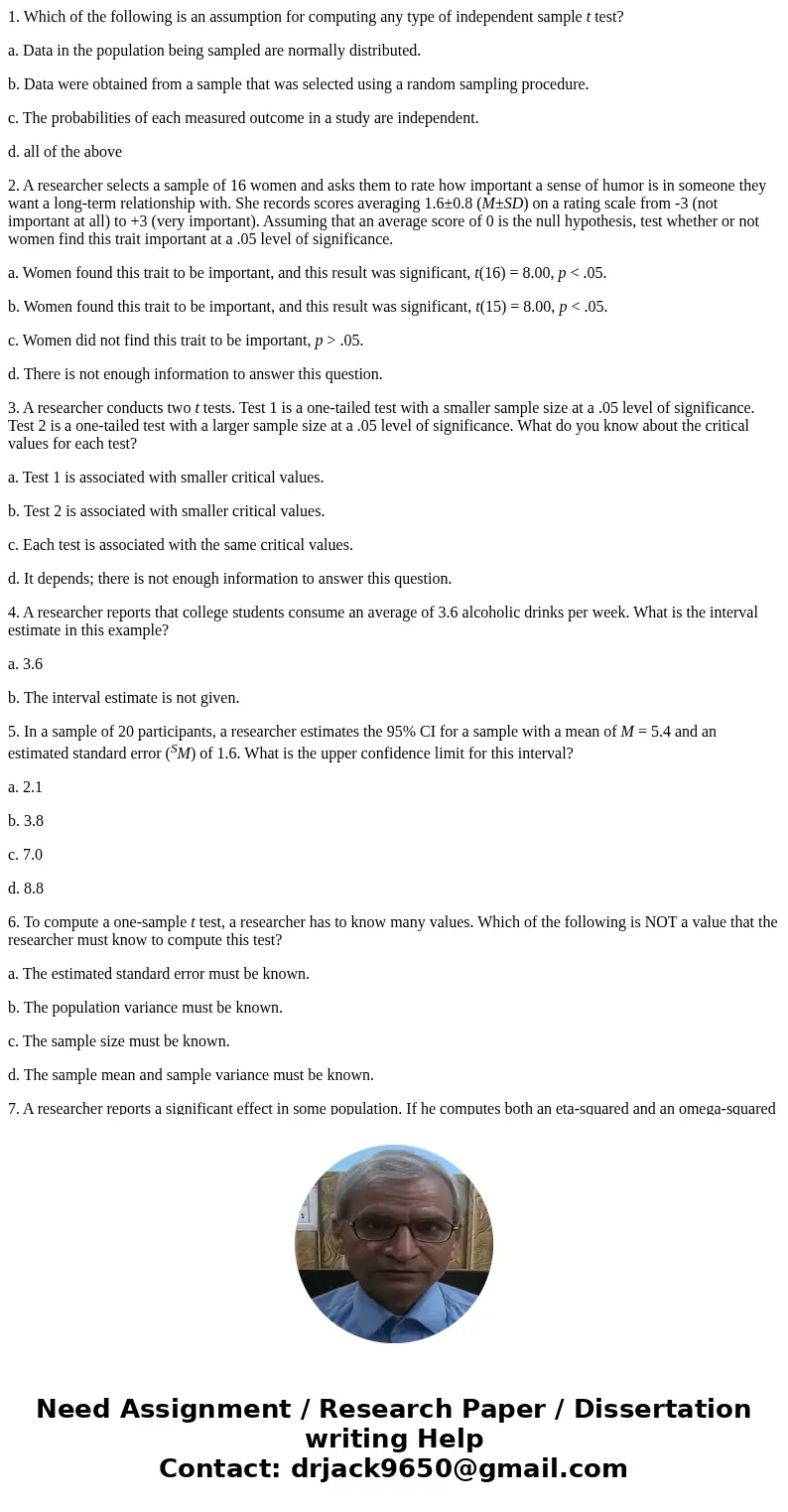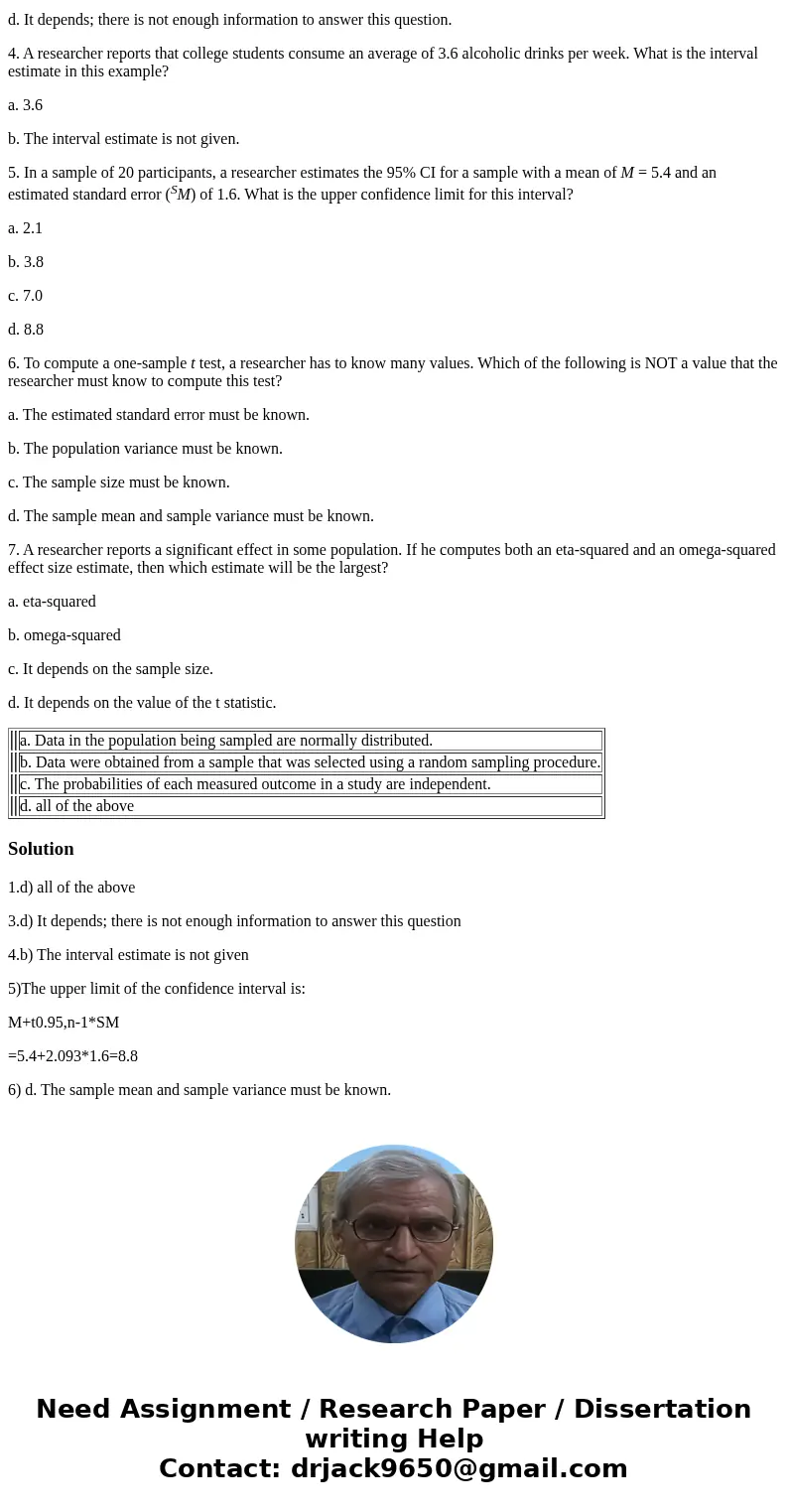1 Which of the following is an assumption for computing any
1. Which of the following is an assumption for computing any type of independent sample t test?
a. Data in the population being sampled are normally distributed.
b. Data were obtained from a sample that was selected using a random sampling procedure.
c. The probabilities of each measured outcome in a study are independent.
d. all of the above
2. A researcher selects a sample of 16 women and asks them to rate how important a sense of humor is in someone they want a long-term relationship with. She records scores averaging 1.6±0.8 (M±SD) on a rating scale from -3 (not important at all) to +3 (very important). Assuming that an average score of 0 is the null hypothesis, test whether or not women find this trait important at a .05 level of significance.
a. Women found this trait to be important, and this result was significant, t(16) = 8.00, p < .05.
b. Women found this trait to be important, and this result was significant, t(15) = 8.00, p < .05.
c. Women did not find this trait to be important, p > .05.
d. There is not enough information to answer this question.
3. A researcher conducts two t tests. Test 1 is a one-tailed test with a smaller sample size at a .05 level of significance. Test 2 is a one-tailed test with a larger sample size at a .05 level of significance. What do you know about the critical values for each test?
a. Test 1 is associated with smaller critical values.
b. Test 2 is associated with smaller critical values.
c. Each test is associated with the same critical values.
d. It depends; there is not enough information to answer this question.
4. A researcher reports that college students consume an average of 3.6 alcoholic drinks per week. What is the interval estimate in this example?
a. 3.6
b. The interval estimate is not given.
5. In a sample of 20 participants, a researcher estimates the 95% CI for a sample with a mean of M = 5.4 and an estimated standard error (SM) of 1.6. What is the upper confidence limit for this interval?
a. 2.1
b. 3.8
c. 7.0
d. 8.8
6. To compute a one-sample t test, a researcher has to know many values. Which of the following is NOT a value that the researcher must know to compute this test?
a. The estimated standard error must be known.
b. The population variance must be known.
c. The sample size must be known.
d. The sample mean and sample variance must be known.
7. A researcher reports a significant effect in some population. If he computes both an eta-squared and an omega-squared effect size estimate, then which estimate will be the largest?
a. eta-squared
b. omega-squared
c. It depends on the sample size.
d. It depends on the value of the t statistic.
| a. Data in the population being sampled are normally distributed. | ||
| b. Data were obtained from a sample that was selected using a random sampling procedure. | ||
| c. The probabilities of each measured outcome in a study are independent. | ||
| d. all of the above |
Solution
1.d) all of the above
3.d) It depends; there is not enough information to answer this question
4.b) The interval estimate is not given
5)The upper limit of the confidence interval is:
M+t0.95,n-1*SM
=5.4+2.093*1.6=8.8
6) d. The sample mean and sample variance must be known.


 Homework Sourse
Homework Sourse